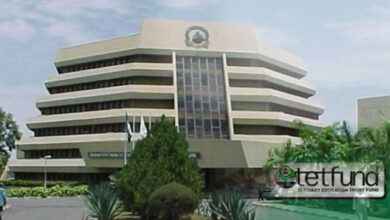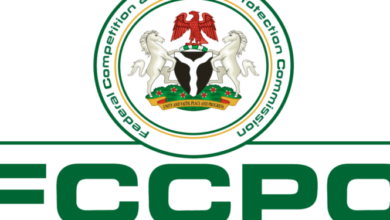Nigeria’s Fiscal Condition and Debt Management in 2025: The Observed Challenges
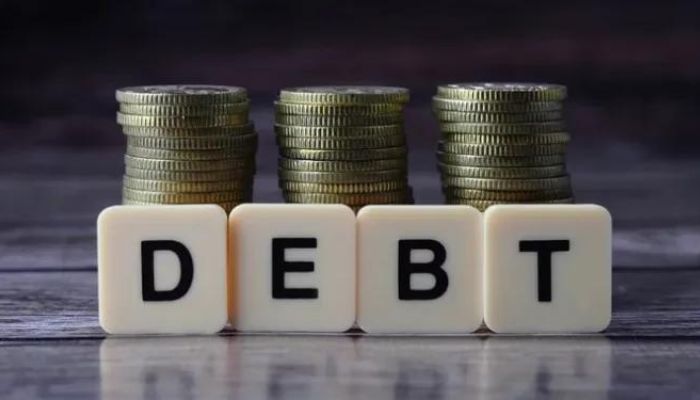
The Nigerian economy has shown increased stability and a steady recovery across several key areas. Improvements include enhanced functioning of the foreign exchange market, reflected in a 2% narrower premium in Q3 2025; more than 10 consecutive quarters of trade surpluses; Increasing external reserves rising to $44.19 billion as of November 20, 2025; and a moderation in consumer price inflation to 18.05% in October. While these gains indicate that earlier macroeconomic headwinds are gradually easing, a number of critical indicators, particularly those related to fiscal liquidity, debt servicing pressures, budget execution, and fiscal credibility, continue to require close monitoring.
International rating agency S&P recently reaffirmed Nigeria’s sovereign rating at B-/B and upgraded the outlook from Stable to Positive, citing foreign exchange market liberalisation, the removal of petrol subsidies, and ongoing structural reforms. Nevertheless, S&P highlighted the complexity of Nigeria’s fiscal outlook, noting that the country’s revenue-to-GDP ratio remains among the lowest of all rated sovereigns, while debt service costs remain at worrying levels. This assessment aligns with Moody’s, which earlier upgraded Nigeria’s rating from Caa1 to B3, still within non-investment grade, but cautioned that interest payments continue to absorb at least one-third of government revenue, constituting a major fiscal vulnerability.
Federally collected revenue rose by 15.03% to N8.31trn by the end of Q2 2025. Between 2020 and 2024, the Federal Government’s retained revenue expanded from N3.78trn to N9.44trn, reflecting significant progress in revenue mobilisation efforts. However, whether this improvement translates into a sustainably stronger fiscal position remains uncertain, particularly given the persistence of high deficits and debt costs (see chart 1 below).
Chart 1:

Nigeria’s Debt Exposure: Medium-Term Debt Management Strategy (MTDS) for 2024–2027 Vs Realities in 2025
Nigeria’s public debt remains broadly within acceptable thresholds under the Medium-Term Debt Strategy (MTDS); however, the government’s limited revenue capacity continues to constrain its ability to service this debt sustainably. While the deliberate shift toward greater domestic borrowing helps mitigate foreign-exchange exposure relative to external debt, it also increases pressure on the domestic financial market. Debt managers have recommended further maturity extensions to reduce rollover risk. Yet, the overarching challenge remains the low revenue base, which, if not significantly strengthened, could render the debt position increasingly vulnerable.
Performance indicators for 2024–2025 show mixed outcomes relative to MTDS targets for 2024–2027. Total public debt decreased slightly to 39.1% of GDP in 2025, remaining comfortably within the 60% benchmark. However, the domestic share of total debt rose from 48% in 2024 to 52% in 2025, approaching the upper bound of the MTDS portfolio composition target. The debt service-to-GDP ratio declined to 1.61% in 2025, indicating modest improvement, yet the debt service-to-revenue ratio, despite improving, remains elevated and underscores persistent fiscal pressure.
The share of Nigerian Treasury Bills increased from 9.18% in 2024 to 16.67% in 2025, reflecting a growing reliance on short-term instruments and, consequently, heightened rollover risk. Although short-term LCU debt as a percentage of external reserves remains below the MTDS ceiling, the upward movement signals rising liquidity and refinancing vulnerabilities that warrant close monitoring (see table below).
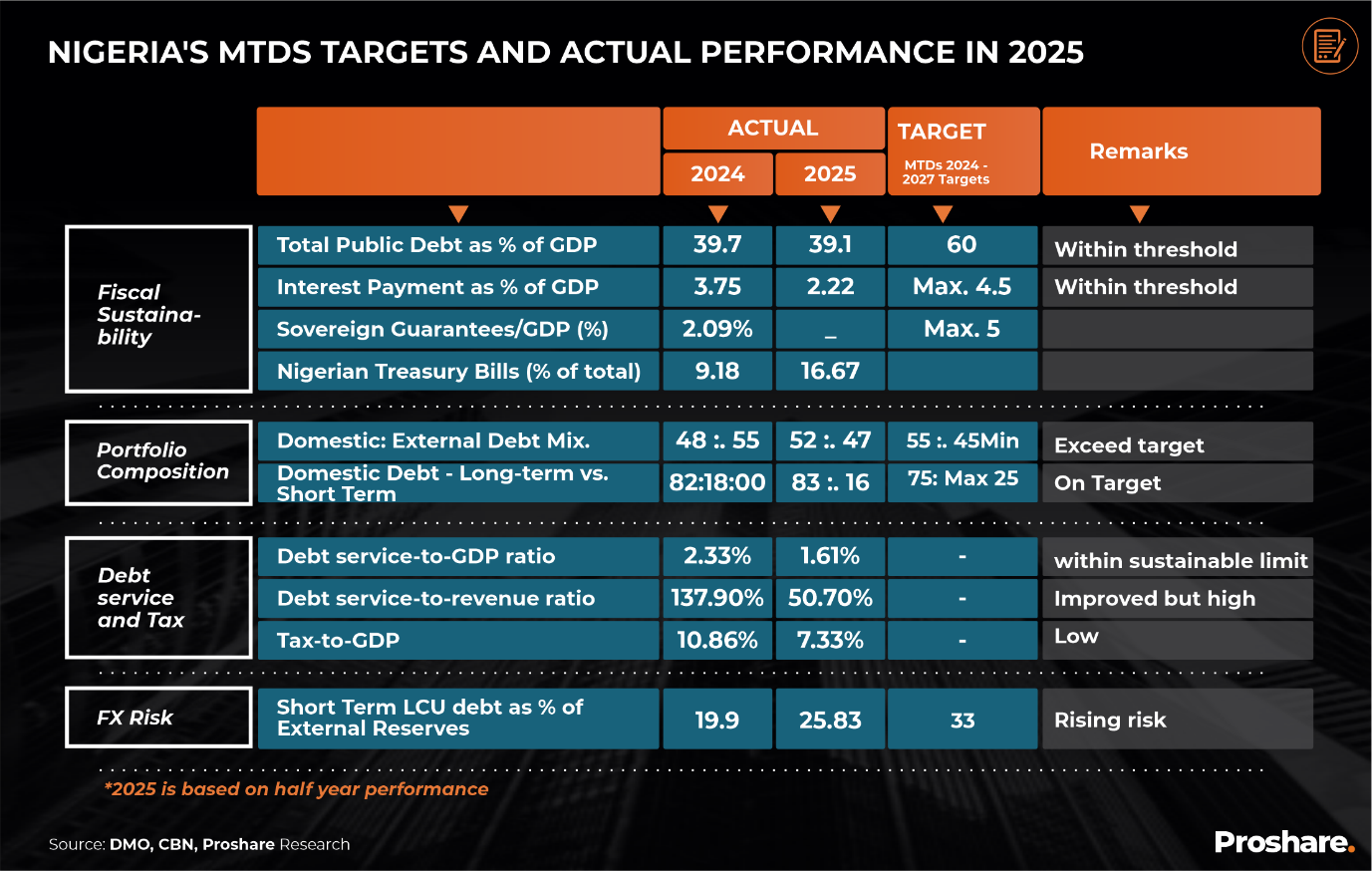
Fiscal uncertainties are also observed in Nigeria’s budget process and performance, and in the continued extensions of Nigeria’s budget implementation cycle. While this is intended to execute the capital provisions of the budget, these delays underscore the persistent fiscal liquidity constraints facing the government. Additionally, the 2025 budget, initially approved at N54.99trn on February 28, 2025 and later revised upward to N59.99trn by November, only commenced implementation in September, coinciding with the start of the final quarter of the year. Since President Bola Tinubu’s administration began, the statutory January-to-December budget cycle has not been adhered to. In 2023, four budgets were implemented concurrently, and in 2025, three are in operation.
With only one month left in the fiscal year, it is evident that the implementation of the 2025 budget will extend into 2026. Rising deficit pressures suggest that debt accumulation will continue, and the overlap of multiple budget cycles across periods is likely to persist. Furthermore, it remains unclear whether a 2025 budget implementation report will be published. More concerning is the delayed disclosure of the 2026 spending plan, coupled with the absence of a Finance Act and a Medium-Term Expenditure Framework, critical tools for fiscal planning, transparency and fiscal credibility.
This persistent opacity and weak disclosure practices within Nigeria’s budget process continue to erode confidence in the broader fiscal framework. While revenue mobilisation efforts are expected to intensify amid tax reforms, uncertainty remains regarding the government’s capacity to execute capital budgets effectively, especially given the increasing reliance on borrowing rather than equity inflows, including foreign direct investment. As a result, liquidity constraints and fiscal pressures are likely to remain elevated through 2026, despite the scheduled commencement of new tax laws in January 2026.
On the debt front, Nigeria’s total public debt increased by more than 300% between 2020 and 2025, reaching N152.40trn as of H1 2025, up from N33.92trn in FY 2020. Following Nigeria’s GDP rebasing, the debt-to-GDP ratio stood at 40% at end-2024 and adjusted slightly to 39.1% in H1 2025, remaining below both the national debt ceiling of 60% and the IMF’s 70% benchmark for market-access countries.
However, the absence of post-H1 2025 data from the Debt Management Office (DMO) and the National Bureau of Statistics (NBS) has led institutions such as the World Bank to estimate Nigeria’s debt-to-GDP ratio at 40% in its October 2025 Nigeria Development Update, while S&P estimated the ratio at 40.7% at year-end (see chart 2 below).
Chart 2:

Also, the World Bank’s estimate of the debt cost-to-GDP ratio for 2025 put the country’s ratio at 40%+. Based on available official CBN data in the CBN ECONOMIC REPORT, SECOND QUARTER 2025, a notable proportion of the government’s revenue (over 100% between 2022 and 2024) was allocated to debt servicing. Higher interest rates have attracted money market participants and portfolio inflows; however, this has significantly increased the government’s debt service costs (see chart 3 below).
Chart 3:
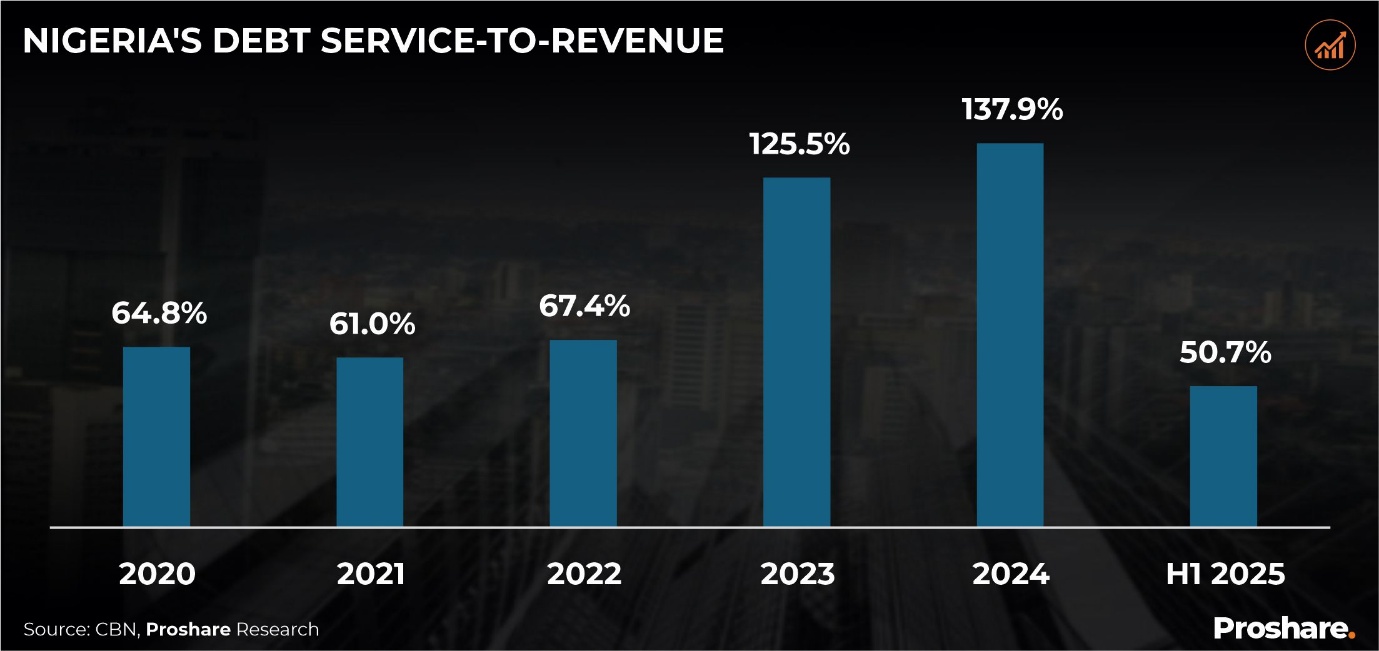
Closing Thought – From Income-centric to Asset-centric Fiscal Management
Nigeria’s fiscal realities require a few policy tweaks. The current income-centric approach to budgetary management needs to be replaced by an asset-centric approach to fiscal management. A few things need to change:
- Idle pubic assets need to be financialised. In other words, they need to be converted into tradeable financial instruments, and the assets should be valued and packaged in deal books for reference in a national asset register and a deal room.
- The government needs an increased proportion of public debt to be non-interest-bearing. This could be done by issuing zero-coupon bonds.
- Entities like the Nigerian National Petroleum Corporation (NNPC) Limited should be audited, valued, and listed on an equity exchange similar to Saudi Arabia’s public oil giant, Saudi Aramco.
- The country has more of a revenue problem than a debt problem; therefore, leveraging the country’s large asset base could relieve Nigeria of its fiscal strain. Issuing new mining licenses for solid minerals like Lithium. Bauxite, Columbite, and possibly Bitumen could generate revenues that improve the country’s debt-to-revenue ratio and debt-to-GDP ratio.
- Admittedly, there are signs that a price correction for global assets is imminent; however, putting a market-determined price on public assets and creating market liquidity provides net gains and helps in delivering superior options for treasury management.
- Schemes like privately initiated infrastructural proposals (PIIPs), as discussed by Messrs Templars, legal practitioners, in a recent report, appear to be viable alternatives to funding capital projects through budgetary provisions.
Nigeria’s fiscal authorities need to act from imagination rather than from history. The possibilities for fiscal redesign and redirection far outstrip the constraints of debt and revenue. Nigeria needs to be more creative in its overall fiscal architecture; the strategy, not the tactics, is at the centre of the play.
Source: Proshare Research



